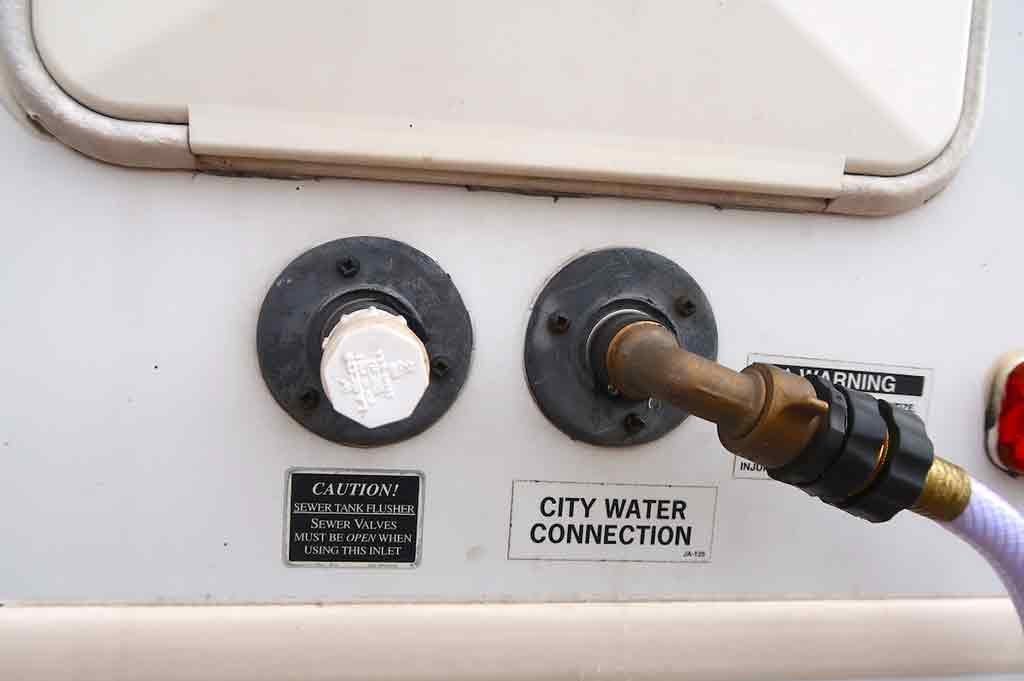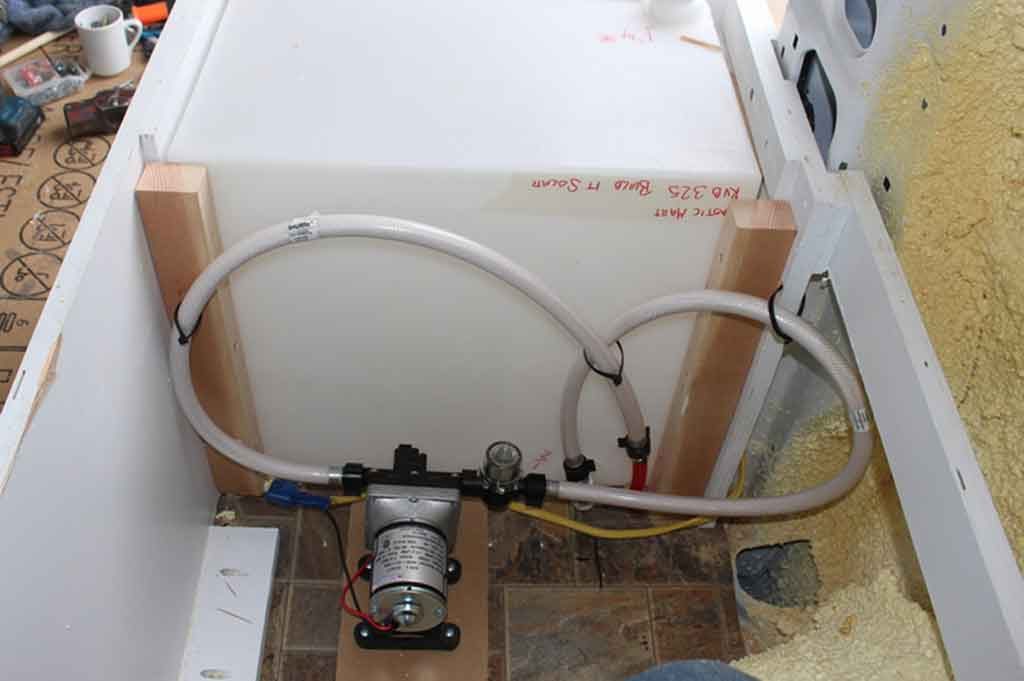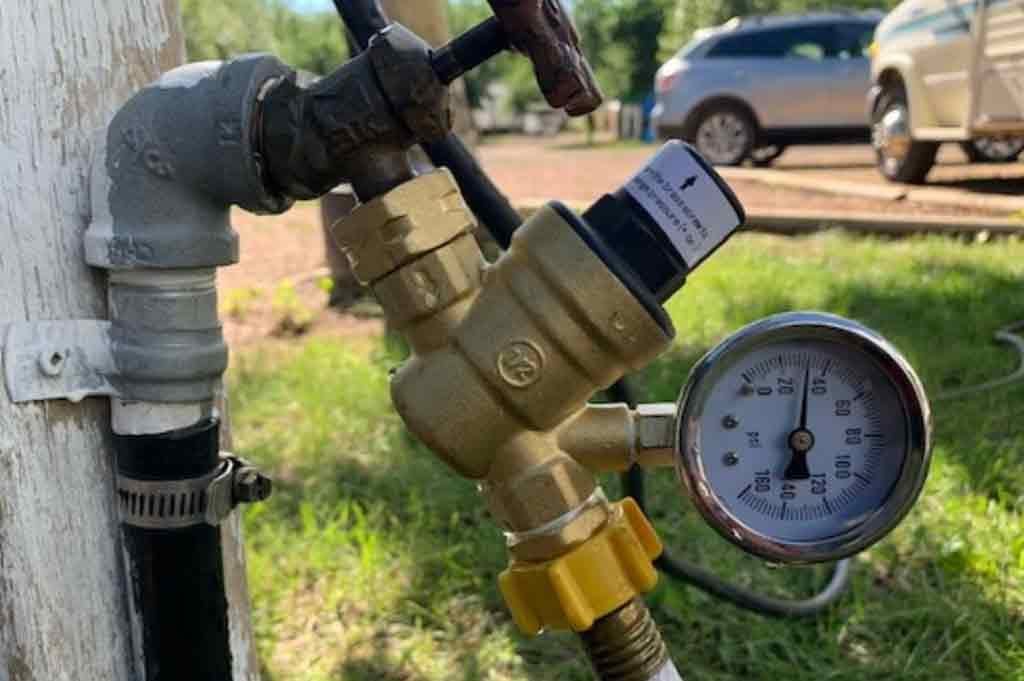RVs are great for exploring the world and living on the go. But the RV plumbing or water system can be a hassle to deal with when it breaks. The best way to avoid these problems is to know how this system works.
Learning about the RV plumbing system basics will clear much of your confusion. Let RV Talk help you to understand more about the RV plumping system parts and the system operation:
Contents
What Is an RV Plumbing System?
Did you know that the RV water system is different from regular plumbing? It uses a pump to move the water through the RV, and also has a holding tank for waste materials.
The goal of RV plumbing is to move fresh water from the holding tanks to the sink, shower, toilet and other fixtures inside your rig. It is a closed-loop plumbing system that provides potable water and wastewater disposal for recreational vehicles.
The water supply to an RV’s plumbing can come from a variety of sources: on-board fresh water tanks; municipal sewer hookups; or off-site freshwater tankers. Wastewater is removed by simply dumping the contents into a drain at the campsite or sewage dump station.
RV Plumbing System Basics: The Components of the System
Water is essential to life on the road. To keep that essential item available, you have to have basic ideas about the system that supplies it.
The motorhome plumbing system is an intricate network of pipes, valves, and fittings that all work together to provide reliable water and waste disposal services. It typically revolves around these components:

1. RV Water Pumps
Powered by a 12V DC battery or shore power, a pump supplies pressurized fresh water through the system. It is connected to a fresh-water tank that stores enough clean water for drinking, cooking, and sanitation purposes.
Any standard water pump in a travel trailer should have at least 3 to 6 gallons of water flow rate. Although, you won’t normally need such a high flow, except for at the time of taking shower.
2. RV Plumbing Fittings
There are four main interior fittings in the plumbing system – faucets for the kitchen and bathroom, a toilet, and a showerhead. The fittings are connected to the plumbing network by piping and valves.
Make the plumbing fixtures eco-friendly, so they prevent wastage of water. Use low-flow faucets and showerheads, and install water-saving toilets. Low-flow of water will still get the cleaning job done without quickly emptying the freshwater tank.
3. RV Toilet Plumbing
RV toilets are different from the ones you use at your home. There should be no water in the toilet bowl as it can spill with the motion of the vehicle. These toilets have a manual system for filling up the bowl and in some cases, you can use a spray nozzle to clean up after each use.
It’s better to use a low-capacity toilet to prevent the quick filling up of the wastewater tank. However, a low-flow toilet may look less clean than the ones that use plenty of water for flushing.
4. Hot Water Heaters
There are several types of hot water heaters available on the market. Some models use electrical energy to provide hot water, while others run off propane tanks located outside the vehicle. The one that runs on electricity or battery power is not budget-friendly because water consumes plenty of power for heating up.
The most economical choice is a tankless model that only uses electricity when needed. This type of heater can be powered by a solar panel in the sun or by a generator when no sunlight is available. They can also run by engine heat transfer, which is economical too because of not using any battery power or propane.
Related: Best RV Portable Waste Tanks
5. Tanks
Tanks are considered as one of the most important travel trailer plumbing parts. They hold the water supplied to the trailer and collect the wastewater. All tanks should be well-insulated to prevent water freezing in the winter and safeguard from external elements.
The Potable or Freshwater Tank
It supplies the drinking water and all freshwater you need in an RV. You have two options when it comes to providing fresh water in a travel trailer. Hook the unit to the city’s water supply or it can have its own private tank that collects rainwater and stores it somewhere (could be in a separate tank).

Through a water pump, fresh water from this tank is pumped and supplied through the kitchen faucets, shower, and toilet.
The Black Tank
It holds sewage (a combined form of human excrement and used toilet paper). It’s possible to dump the tank at most campsites or into a sewer system once it reaches its limit. Before draining the wastage, make sure that it’s an RV-compatible dumpsite.
The Gray Tank
The gray water tank is a bit different. It’s connected to RV sinks, dishwashers, showers, and washing machines. The water it collects may have soap, detergent, and food waste. So, it’s not as intimidating as the wastage in the black holding tank.
There should be a valve between the freshwater and black-water tanks so that you can close the line to prevent backflow from one tank to another when changing their location.
The fresh water is pumped through a system of pipes while wastewater goes into the holding tanks or directly onto the ground tank (in some campsites).
Read more: Best RV Tankless Water Heaters
6. Pipes or Tubing
Pipes are also quite an important part of the RV plumbing system basics. They channel pressurized water from the pump to all parts of the vehicle, including inside sinks in the kitchen or bathroom, showerheads, and toilets.
The pipes should be made of materials that won’t corrode easily. PVC is the popular choice in this case because it’s non-corrosive and does not add much weight to the trailer unit. Like the tanks, purchase insulated pipes or add extra insulation to avoid damage or water freezing in cold weather.
There is a one-way valve in the RV plumbing system that prevents the backflow of pressurized water from the pipes to either freshwater or wastewater tanks. The valves are usually located at connection points between different pieces of pipe, so they quickly close when there’s any pressure change. It’s better to install valves that are screwed onto the pipes, rather than glued.
7. Other Accessories
There are some minor accessories that you should know about to make sense of the RV plumbing system basics.
Potable Water Hose
Potable water hoses should be well-insulated and made from a material that doesn’t react with drinking water. The color of these pipes is almost always white. The hose is used to refill the freshwater tank, so you should take good care of it to prevent drinking water contamination.
It’s important to buy a potable water hose with an O-ring on both ends of the connection point for protection against leaks and cross-contamination.
Drainage Hose
A drainage hose is a flexible pipe that connects to the black and gray water tanks. It’s used for emptying wastewater from the holding tanks into the dumping station.
The diameter of such a hose should be at least 3 inches, so toilet paper and solid waste can flow without any problem.
This type of hose should be made out of heavy-duty material, such as polyester or rubber that doesn’t react with wastewater.
Water Pressure Regulator
The water pressure regulator is a small device but an integral part of the RV plumbing system basics. Without it, the whole system can be damaged if the water from the external source is supplied at high pressure.
The pressure of water supply in the city water source and many campgrounds could be more than 100 psi. On the other hand, an RV water system is designed to handle only 40 to 60 psi. So, the regulator can keep the pressure in check, protecting all plumbing system components.

How Does RV Plumbing Work?
An RV plumbing system commonly has a toilet, shower, and sink but some smaller units may not have the first one. However, the working principles of all systems are more or less similar. All tanks are located under the RV chassis.
The system is a closed loop that starts with an intake valve from an outside water source or from a campground hookup site. The freshwater tank collects water from any of these sources. Water then flows through pipes to another inlet valve, where it’s redirected to a fresh-water tank or toilet. Wastewater is then released into the waste-holding tanks, which have a drainage hose that goes into the dumping station.
The water heater controls the heat of the water according to your needs while the pressure regulator keeps the pressure at a safe level.
Conclusion
The entire water system does not involve any super-complex process. With the RV plumbing system basics, you now know that there are only three tanks and some parts that manage the whole system. If you face any problem with the supply because of a leak or damage to any parts, you now know where to look into. Sometimes, the tanks and pipes may need a thorough cleaning for proper functioning.
